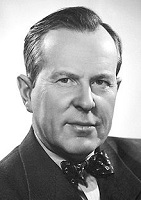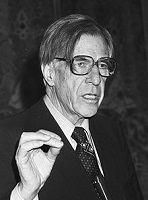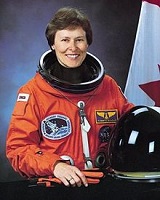UNIVERSITY of
TORONTO
Toronto, CA
Est. 1827
Ranking
#18
In the World
Times Higher Education
Est.
1827
Students
62,000
Other Rankings
- #25 in the world by 2020 QS Ranking.
#3 in Oncology, #4 in Clinical Medicine, #8 in Cardiac and Cardiovascular Systems by 2020 US News subject ranking.
Former Names
- 1827 – King’s College
Website
- https://www.utoronto.ca/
"
Velut arbor ævo.
"
About
The University of Toronto (U of T or UToronto) is a public research university in Toronto, Ontario, Canada, located on the grounds that surround Queen’s Park. It was founded by royal charter in 1827 as King’s College, the first institution of higher learning in the colony of Upper Canada. Originally controlled by the Church of England, the university assumed its present name in 1850 upon becoming a secular institution. As a collegiate university, it comprises eleven colleges each with substantial autonomy on financial and institutional affairs and significant differences in character and history. The university also operates two satellite campuses located in Scarborough and Mississauga.
Academically, the University of Toronto is noted for influential movements and curricula in literary criticism and communication theory, known collectively as the Toronto School. The university was the birthplace of insulin and stem cell research, and was the site of the first practical electron microscope, the development of deep learning, multi-touch technology, the identification of the first black hole Cygnus X-1, and the development of the theory of NP-completeness. It receives the most annual scientific research funding of any Canadian university and is one of two members of the Association of American Universities outside the United States, the other being McGill University.
History
Early history
18th century
The founding of a colonial college had long been the desire of John Graves Simcoe, the first Lieutenant-Governor of Upper Canada. As an Oxford-educated military commander who had fought in the American Revolutionary War, Simcoe believed a college was needed to counter the spread of republicanism from the United States. The Upper Canada Executive Committee recommended in 1798 that a college be established in York, the colonial capital.
On March 15, 1827, a royal charter was formally issued by King George IV, proclaiming “from this time one College, with the style and privileges of a University … for the education of youth in the principles of the Christian Religion, and for their instruction in the various branches of Science and Literature … to continue for ever, to be called King’s College.” The granting of the charter was largely the result of intense lobbying by John Strachan, the influential Anglican Bishop of Toronto who took office as the college’s first president. The original three-storey Greek Revival school building was built on the present site of Queen’s Park.
Under Strachan’s stewardship, King’s College was a religious institution closely aligned with the Church of England and the British colonial elite, known as the Family Compact. Reformist politicians opposed the clergy’s control over colonial institutions and fought to have the college secularized. In 1849, after a lengthy and heated debate, the newly elected responsible government of the Province of Canada voted to rename King’s College as the University of Toronto and severed the school’s ties with the church. Having anticipated this decision, the enraged Strachan had resigned a year earlier to open Trinity College as a private Anglican seminary. University College was created as the nondenominational teaching branch of the University of Toronto. During the American Civil War, the threat of Union blockade on British North America prompted the creation of the University Rifle Corps, which saw battle in resisting the Fenian raids on the Niagara border in 1866. The Corps was part of the Reserve Militia lead by Professor Henry Croft.
Early history (cont.)
–
Established in 1878, the School of Practical Science was the precursor to the Faculty of Applied Science and Engineering, which has been nicknamed Skule since its earliest days. While the Faculty of Medicine opened in 1843, medical teaching was conducted by proprietary schools from 1853 until 1887 when the faculty absorbed the Toronto School of Medicine. Meanwhile, the university continued to set examinations and confer medical degrees. The university opened the Faculty of Law in 1887, followed by the Faculty of Dentistry in 1888 when the Royal College of Dental Surgeons became an affiliate. Women were first admitted to the university in 1884.
A devastating fire in 1890 gutted the interior of University College and destroyed 33,000 volumes from the library, but the university restored the building and replenished its library within two years. Over the next two decades, a collegiate system took shape as the university arranged federation with several ecclesiastical colleges, including Strachan’s Trinity College in 1904. The university operated the Royal Conservatory of Music from 1896 to 1991 and the Royal Ontario Museum from 1912 to 1968; both still retain close ties with the university as independent institutions. The University of Toronto Press was founded in 1901 as Canada’s first academic publishing house. The Faculty of Forestry, founded in 1907 with Bernhard Fernow as dean, was Canada’s first university faculty devoted to forest science. In 1910, the Faculty of Education opened its laboratory school, the University of Toronto Schools.
World wars and post-war years
World War I
The First and Second World Wars curtailed some university activities as undergraduate and graduate men eagerly enlisted. Intercollegiate athletic competitions and the Hart House Debates were suspended, although exhibition and interfaculty games were still held. The David Dunlap Observatory in Richmond Hill opened in 1935, followed by the University of Toronto Institute for Aerospace Studies in 1949. The university opened satellite campuses in Scarborough in 1964 and in Mississauga in 1967. The university’s former affiliated schools at the Ontario Agricultural College and Glendon Hall became fully independent of the University of Toronto and became part of University of Guelph in 1964 and York University in 1965, respectively. Beginning in the 1980s, reductions in government funding prompted more rigorous fundraising efforts.
2000 to present
Present
In 2000, Kin-Yip Chun was reinstated as a professor of the university, after he launched an unsuccessful lawsuit against the university alleging racial discrimination. In 2017, a human rights application was filed against the University by one of its students for allegedly delaying the investigation of sexual assault and being dismissive of their concerns. In 2018, the university cleared one of its professors of allegations of discrimination and antisemitism in an internal investigation, after a complaint was filed by one of its students. The University of Toronto was the first Canadian university to amass a financial endowment greater than C$1 billion in 2007.
Show Less
Campus
The university grounds lie about 2 kilometres (1.2 mi) north of the Financial District in Downtown Toronto and immediately south of the neighbourhoods of Yorkville and The Annex. The site encompasses 71 hectares (180 acres) bounded mostly by Bay Street to the east, Bloor Street to the north, Spadina Avenue to the west and College Street to the south. An enclave surrounded by university grounds, Queen’s Park, contains the Ontario Legislative Building and several historic monuments. With its green spaces and many interlocking courtyards, the university forms a distinct region of urban parkland in the city’s downtown core. The namesake University Avenue is a ceremonial boulevard and arterial thoroughfare that runs through downtown between Queen’s Park and Front Street. The Spadina, St. George, Museum, and Queen’s Park stations of the Toronto subway system are nearby.
Notable Alumni

William Lyon Mackenzie King
Canadian political leader; tenth prime minister of Canada.
University of Toronto

Lester B. Pearson
scholar, statesman; soldier; prime minister; and diplomat; won the Nobel Peace Prize.
University of Toronto

John Kenneth Galbraith
Canadian-American economist; public official and diplomat; and a leading proponent of 20th-century American liberalism.
University of Toronto

Roberta Bondar
Canada’s first female astronaut and the first neurologist in space.
University of Toronto
FAIR USE STATEMENT
This page may contain copyrighted material the use of which has not always been specifically authorized by the copyright owner. Most of the time, however, we give credits to the author of quotes, photos and other related materials. We sourced these materials from various internet sites, in an effort to advance understanding of environmental, political, geographical, anthropological, biological, human rights, economic, democratic, scientific, cultural and social justice issues, etc.
Source:
https://en.wikipedia.org/wiki/University_of_Toronto
https://www.timeshighereducation.com/
https://www.topuniversities.com/